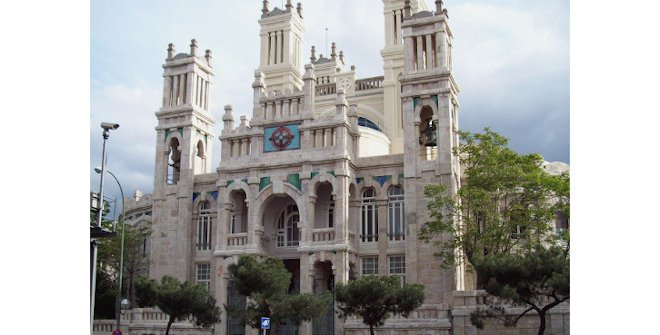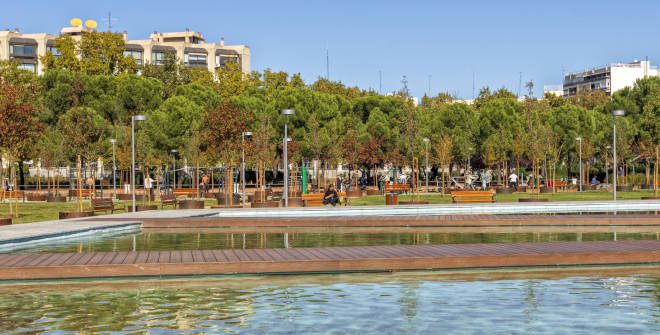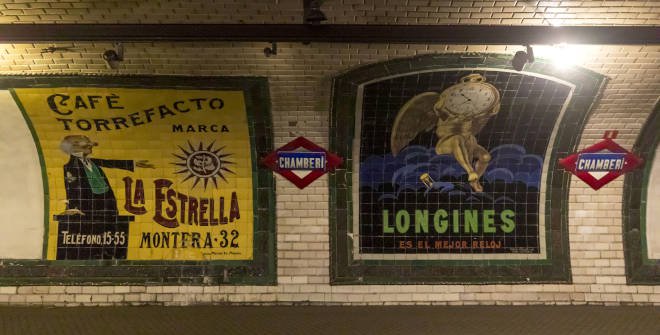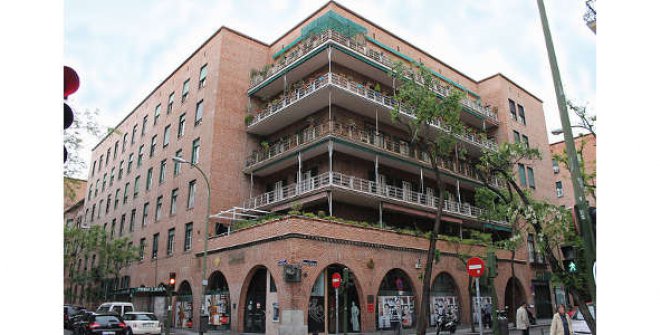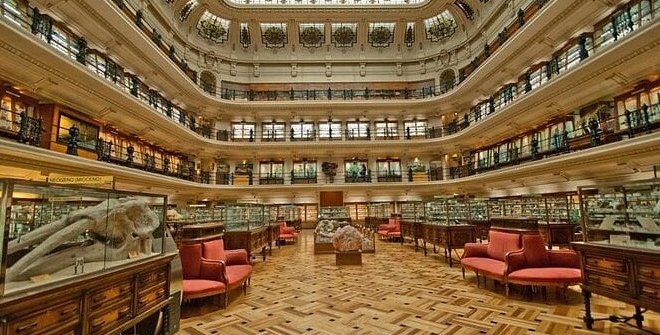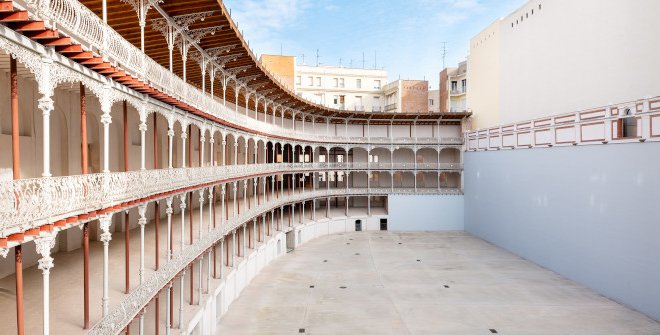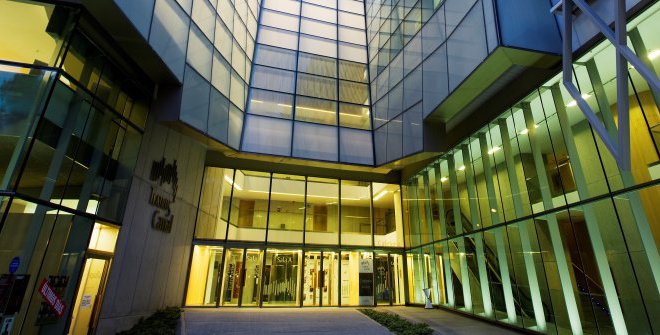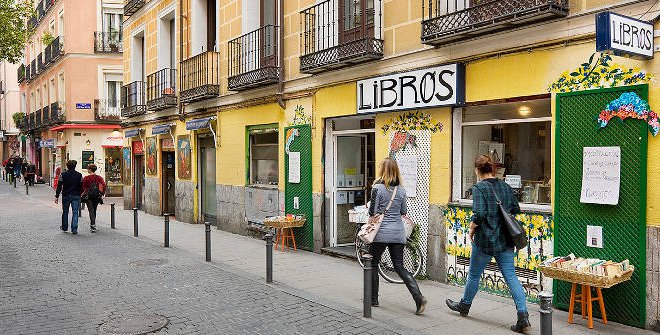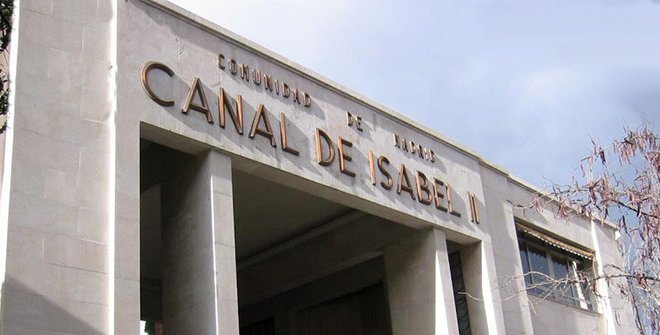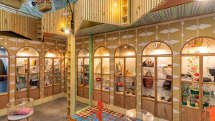Explore the streets of Chamberí
It’s one of Madrid’s most authentic and traditional neighbourhoods, as we’re reminded by scores of plays, sainetes and zarzuelas. However, it’s also one of the city’s most illustrious areas too, home to writers and artists since the early 20th century. Its lively squares, monuments and intriguing places make it an appealing area to visit. Take your time—there’s a lot to enjoy here.
Published in esMADRIDmagazine November 2024
resided on Calle de Rodríguez San Pedro, in a famous block of flats called Casa de Flores. However, the district has also been home to other famous literary figures, including Vicente Aleixandre, Luis Cernuda, Gerardo Diego, Carmen de Burgos, Camilo José Cela and even a young Fernando Fernán Gómez.
Chamberí is very important to the city of Madrid, on both a physical—with some 150,000 inhabitants—and emotional level, as all of its neighbourhoods conceal a wealth of history (Gaztambide, Arapiles, Trafalgar, Almagro, Ríos Rosas and Vallehermoso). This makes it the perfect place to enjoy a leisurely stroll.
Located in the heart of the city, it’s bordered by Calle de la Princesa, Calle de Alberto Aguilera, Paseo de la Castellana, and Moncloa and Reina Victoria avenues. One of the birthplaces of casticismo, a term denoting a strong devotion to local culture and identity, during the first thirty years of the 20th century—in the Silver Age of Spanish literature—, it became a key gathering place for artists and intellectuals.
A DESTINATION FOR ART LOVERS
One of the 20th century’s most important painters, Joaquín Sorolla—the “Master of Light”—, called Chamberí home. His last house, which he built when he was a well-established artist and continued to live in until 1911, is now a museum. Closed until 2026 for extensive renovations, it has temporarily ceded its status as the district’s premier hub for culture and knowledge to the Geomineral Museum (No. 23 Calle de Ríos Rosas). Located in a marvellous building, its main room is filled with carved wooden display cabinets and has a large glass ceiling suspended by a wrought iron and lead frame. Minerals, rocks and fossils remind us of Spain’s important geological and palaeontological heritage.
Another imposing building holds the exhibition space Sala Canal de Isabel II (No. 125 Calle de Santa Engracia). The structure was originally built between 1907 and 1911 as Madrid’s first elevated water tank. Eclectic in style, the monumental industrial construction stands out for its beautiful brick exterior and circular layout. Inside its walls, it hosts some very interesting temporary displays, almost always focusing on photography and images.
An old neoclassical-style elegant mansion houses the María Cristina Masaveu Peterson Foundation (No. 6 Calle de Alcalá Galiano), which has an impressive collection of art, particularly contemporary works, with pieces by both established and emerging artists.
Another institution whose exhibitions never cease to amaze is the Casa de México en España Foundation (No. 20 Calle de Alberto Aguilera), which invites us to learn about Mexican culture and society. To this end, it also organises film series, culinary workshops and many other activities.
WALKING THROUGH A TIME TUNNEL
Elegant and stately, the neighbourhood of Almagro is located between Paseo de la Castellana and the area of Las Salesas. One of the most beautiful parts of Madrid, it’s full of homes with imposing façades and former mansions, some of which are now hotels, such as Santo Mauro, A Luxury Collection Hotel (No. 36 Calle de Zurbano), with its lush garden, as well as historic buildings like Beti Jai (No. 7 Calle del Marqués de Riscal).
Recently restored, this monumental fronton, or pelota court, bore witness to the rise of the Basque sport’s popularity in the late 19th century, when it was all the rage in Madrid. It first opened in 1894 and is the only fronton still standing in the city. Its name translates to “always festive” in Basque, and, as of a few weeks ago, its interior now houses a brand-new interpretation centre sharing the history of the space with the public.
Chamberí Station (Plaza de Chamberí) also takes us on a trip back in time. Opened in 1919 and originally located along Metro Line 1, it was forced to close in 1966 as its platforms couldn’t be widened to keep up with demand. The exterior was walled up, leaving the interior almost perfectly preserved so that, today, walking down the stairs here is like stepping into a tunnelled time machine.
It was designed by architect Antonio Palacios, who incorporated natural light by placing a skylight in the entrance. The entire vaulted ceiling is covered in tiles, although the original advertising posters, also made from ceramic, are the most eye-catching feature.
Another building designed by Palacios, in collaboration with Joaquín Otamendi, is Maudes Palace (No. 18 Calle de Raimundo Fernández Villaverde), formerly Hospital de Jornaleros. Its plethora of turrets and its stonework are reminiscent of Cibeles Palace, but the visual clarity of its façades suggests a strong influence from the Vienna Secession.
FROM PUBLIC SQUARES TO THEATRES
In addition to notable buildings, the district of Chamberí also has some major hives of activity, such as Plaza de Olavide. Located in the heart of the Trafalgar neighbourhood, it was recently remodelled and the nearby streets were pedestrianised. As well as lively outdoor bars and cafés, it now boasts more trees and landscaped areas, benches and even a recreational space with ping-pong tables.
It’s a meeting place for many Madrileños, as is the area around Glorieta de Quevedo roundabout, which is presided over by a statue of the famous writer from the Spanish Golden Age. You’ll find, however, that he’s not the only literary or dramatic figure honoured with a monument in the district. In addition to the bandstand in Plaza de Chamberí, there’s also a bust of comic actress Loreto Prado (1863-1943), which is a replica of the last public sculpture created by Mariano Benlliure.
Another monument, which stands over Plaza de los Chisperos de Chamberí, pays tribute to sainete writers. It’s crowned by a chispero and a manola (a man and woman from the working classes) and a typical couple from 19th-century Madrid, set above busts of Ramón de la Cruz, Chueca, Ricardo de la Vega and Barbieri.
The performing arts also take centre stage in Chamberí, which is home to some of Madrid’s most important theatres, including Teatros del Canal (No. 1 Calle de Cea Bermúdez), located in a modern building designed by Juan Navarro Baldeweg, Teatro de La Abadía (No. 42 Calle de Fernández de los Ríos), found in a former church, Teatro Amaya (No. 9 Paseo del General Martínez Campos), Teatros Luchana (No. 38 Calle de Luchana) and Teatro Quique San Francisco (No. 39 Calle de Galileo), which is named after the beloved comedian from Madrid who died in 2021.
Film aficionados will be happy to know that many movies were shot in the district, including Antonio Mercero’s The Telephone Box (1972). If you’re looking for the red phone box that José Luis López Vázquez couldn’t escape from, you won’t find it—because it never actually existed. There is, however, a replica that pays tribute to the iconic film, which was shot in a private courtyard between Calle de Rodríguez San Pedro and Calle de Arapiles, the street where the unique monument now stands. Just a stone’s throw away is Plaza del Conde del Valle de Súchil, where there’s a sculpture of the detachment of soldiers known as “Our Last Men in the Philippines” who defended against Filipino forces in the Siege of Baler, on the island of Luzon. This battle resulted in the definitive loss of the Spanish colonies in 1898.
Santander Park is the district’s main green space, which becomes a vibrant setting when the sun goes down, with live music venues like Galileo Galilei (No. 100 Calle de Galileo) and Clamores (No. 14 Calle de Alburquerque) as well as many other bars to help keep the night going strong. Once the sun comes up, you’ll want to hit the streets again and wander all over Chamberí, whose name, incidentally, comes from Chambery: a military camp that was set up by French troops in the district’s main square during the Spanish War of Independence.

